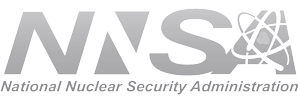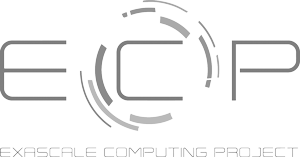Using Agile principles in the development of scientific software is widely accepted as a best practice. But in some situations, a deeper initial dive into requirements and design can be beneficial.
Agile principles in science vs enterprise software
Over the past few years, it has almost become an orthodoxy among better-informed scientific software developers to follow Agile principles in their software processes. Several reasons have driven this scenario. Initially, the models that dominated enterprise software before the advent of Agile methods had far too many process overheads to be even remotely feasible in science environments. More important, two key ideologies coincided with one another: the growing popularity of Agile principles in enterprise software and the scientific software community's growing awareness of the adverse impact on productivity in the absence of defined software processes. However, the ways in which the adoption of Agile principles have affected these two areas of software development could not be more different.
In enterprise software, Agile methods have served to reduce the upfront overheads and made processes more nimble. In most science domains, the software development process has traditionally resembled dysfunctional Agile, in the sense that the development was driven by results needed for the next science paper. The emphasis was on quick development and availability to the "client," who was often the developers themselves. The flip side was that the amount of technical debt accrued through such unplanned development led to the untimely demise of many scientific software projects. So, ironically, the introduction of Agile methods in these scientific domains was doing the exact opposite of what it was doing for enterprise software. That is, Agile methodology was slowing down the next "delivery" of scientific software to incorporate some process where none had existed before.
Is Agile always the right answer?
Over the course of two major version revisions of FLASH, a large and long-lived scientific software project, I have come to the conclusion that while the incorporation of more formal processes as part of Agile has generally been helpful, the evangelization of Agile in the community may have gone too far for some classes of scientific software, in particular multiphysics multidomain codes. For example, because of their mathematical complexity, long-lived multiphysics codes tend to exercise separation of concerns, where bookkeeping is kept separate from the numerics. This approach is driven partly by the interdisciplinary nature of these projects and partly by the highly dynamic world of algorithms used in scientific software. Many multiphysics application software projects rely on a robust framework to enable flexibility and extensibility of the software. As with anything that needs to be robust and has to last a long time, a great deal of thought needs to go into requirements gathering and design. In this instance, Agile methods can be counterproductive. The exploration of the design space itself can follow Agile principles, but the overall design of the framework requires a more holistic approach.
FLASH had been quickly stitched together initially using three pre-existing codes following the "quicker than Agile" approach common in science. Use of Agile would have been appropriate for the first functional version; but once a tool was available to do science, it was equally important to redesign and refactor. The availability of this "quick and dirty" solution permitted a more considered approach to design for longevity. In two instances of major architectural revisions of FLASH that I have been associated with, the design phase took longer than 6 months of discussions, white boarding, prototyping, refining, and even discarding ideas. Both times the architectural revision took more than two years from the start before the first simple application instance could be configured. As a result of this upfront investment in requirements gathering and thoroughly understanding the design space, the code has been able to pivot to several science domains (it was built for astrophysics, and it is now used by at least six other domains), saving huge infrastructure development efforts in those domains.
Software processes should fit the needs
As with everything else in the world, process should fit needs. Where modifications impact a lot of code, making the cost of modifications high, but where the rate of change is very low, more thorough planning is called for. On the other hand, where changes are frequent, relatively inexpensive, and local (e.g., some numerical algorithms), Agile is the perfect choice.
Acknowledgement
This blog post was first presented as a whitepaper at the 2020 Collegeville Workshop (CW20).
Author bio
Anshu Dubey is a computational scientist in the Mathematics and Computer Science Division at Argonne National Laboratory and a Senior Scientist in the Department of Computer Science at the University of Chicago. She is the chief software architect for FLASH, a multiphysics, multiscale HPC application that is used by multiple science and engineering domains as their community code. She is interested in all aspects of HPC scientific software, with special emphasis on design, productivity, and sustainability issues.


